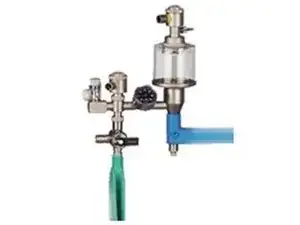Background
In 1999 Hersill moved to a new industrial unit and office building in Móstoles (Madrid), where the first KAV anesthesia circulation circuit was launched. HHersill KAV-1 consists of a unidirectional inspiratory and expiratory circuit and a CO2 absorber system. Although it can be used for any type of anesthesia, it is specifically designed for low-flow use.
KAV-1 is designed for portability considerations, it can be used in many settings, including surgeries in hospitals and public health clinics, veterinary and dental procedures, and in emergency situations, ambulances and military use.
Identification
The KAV-1 has a unique fresh gas inlet. With inspiratory and expiratory lines with check valve. Option to switch between automatic or manual. Spontaneous-manual ventilation system, with reservoir bag. Fitted with a CO2 absorber tank. Can be equipped with an APL valve or an overpressure safety valve.
Sources:
Technical Specifications
Components of a Circular System
- Fresh gas inlet
- Inspiratory and expiratory valves and ports
- CO2 absorber (650-1000 g of soda lime)
- APL valve (0-60 cmH2O)
- Automatic/Manual control
- Airway pressure manometer
Hersill Kav-I Absorber Device
- made of stainless steel, brass, polysulfone and silicon
- has a smaller-than-usual canister, makes soda lime easier to handle
- Placing one canister on top of another, the CO2 absorption capacity can be doubled or tripled
The circuit can be used for two flow techniques
- High flows: Using fresh gas flows near the patient’s normal ventilation
- Low flows (1 - 1.5 l/min) or minimum flows (0.5 - 1 l/min) of fresh gases for the patient’s ventilation
Sources:
Hersill KAV-1 CO2 Absorber User Manual
